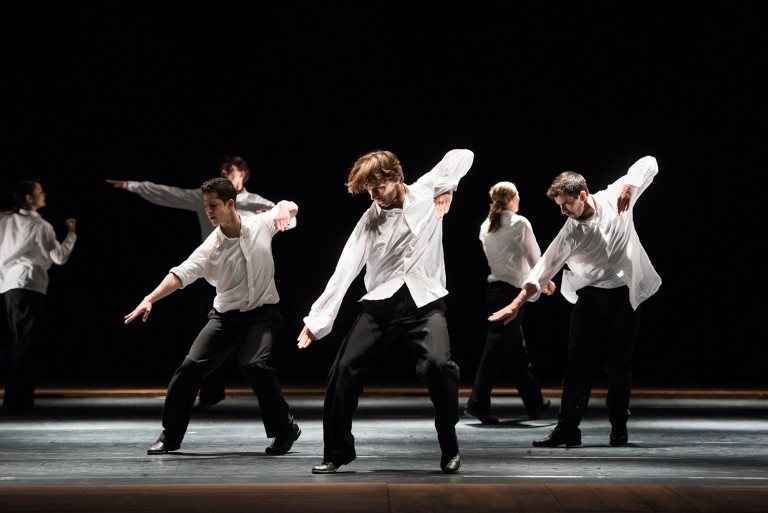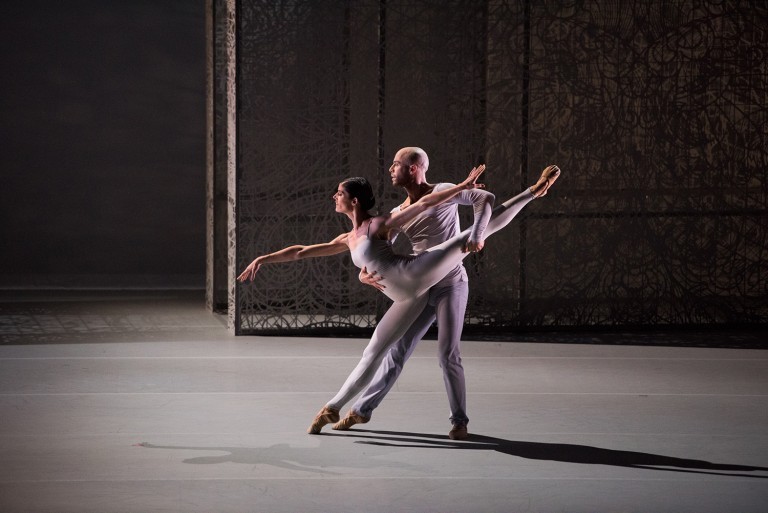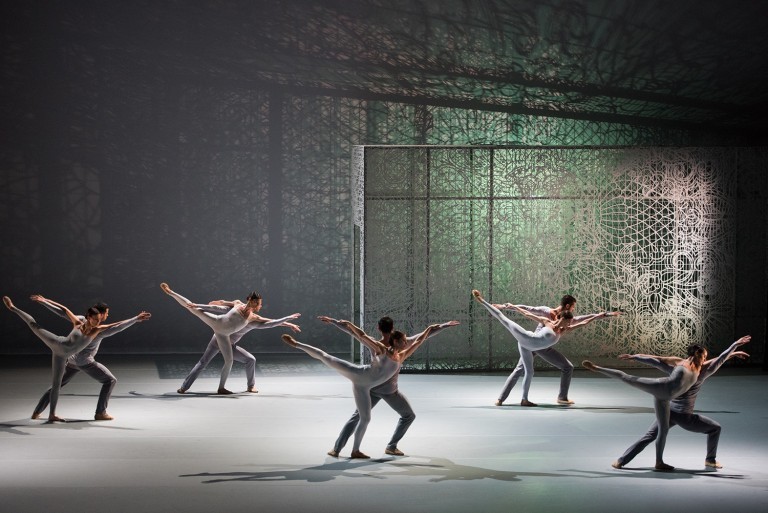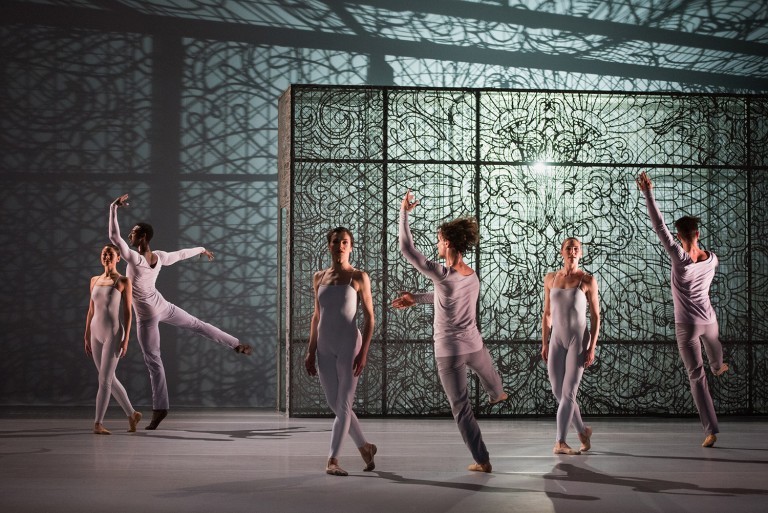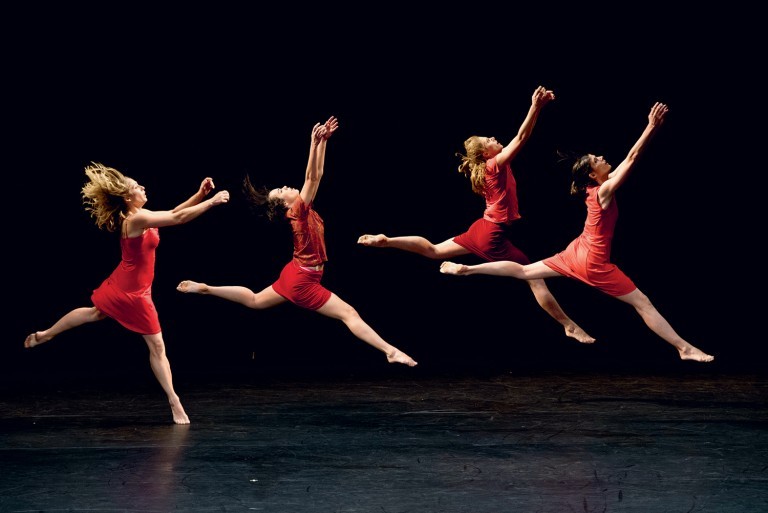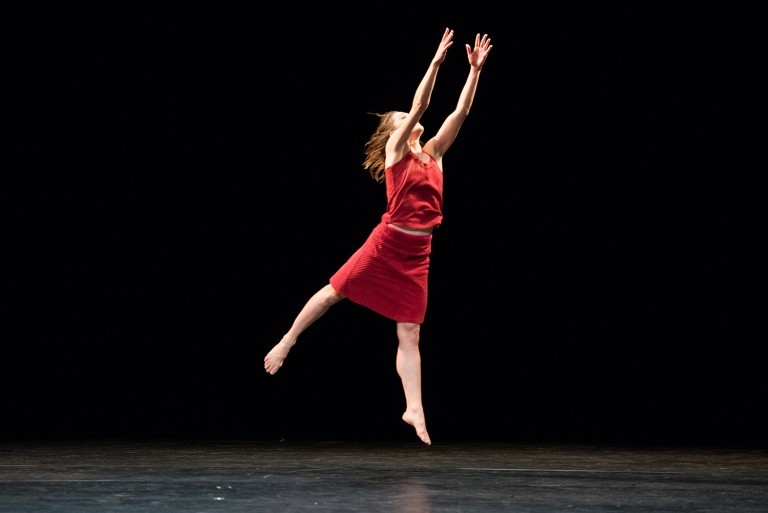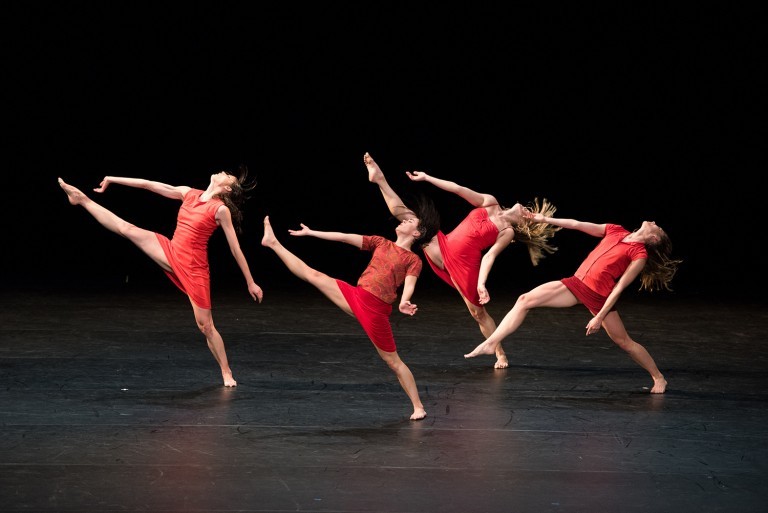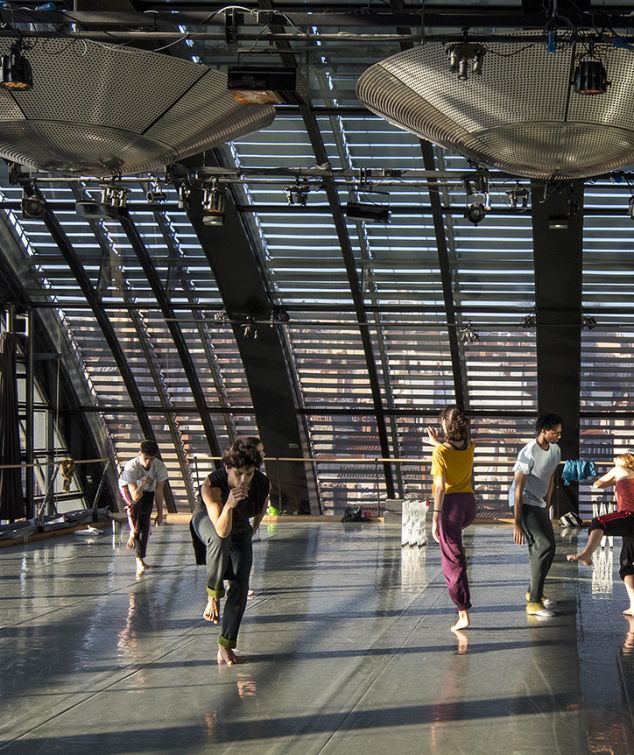At an interval of twenty-five years, Lucinda Childs, Anne Teresa de Keermaeker and Maguy Marin worked on Beethoven’s Die Grosse Fuge so as to deliver three dance scores providing three visions of this work and of the conceptions of dance, here confronted by the spectators’ necessarily curious gazes.
One work, three crowns
Created in 2016 for the Ballet of the Opéra de Lyon, La Grande Fugue according to Lucinda Childs, offers an abstract vision of Beethoven’s work. In a clear, luminous space, a lace cage, lit like a lantern, projects stylised ornaments, in which the choreography is deployed between a classical vocabulary and contemporary geometry.
Anne Teresa de Keersmaeker’s vision sets off a more intimate resonance with Beethoven’s score. The choreographer injects counter-points in a series of echoing, repeated gestural phrases performed by six male and two female dancers. This work, intentionally stripped of aestheticism, celebrates the body’s liberty and affirms the masculinity of its vocabulary.
Maguy Marins La Grosse Fugue is one of the Ballet of the Opéra de Lyon’s “classics”. In this piece, on the frontier between the classical and the contemporary, the Lyonnaise choreographer wanted to make Beethoven’s composition resonate in a “state of enthusiasm and despair”. She succeeded in doing so by launching four female dancers wearing blood-red dresses into a whirlwind of life in a race against death.

